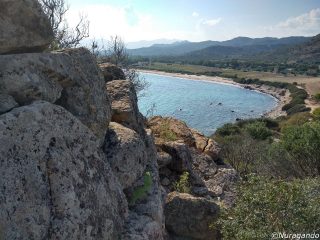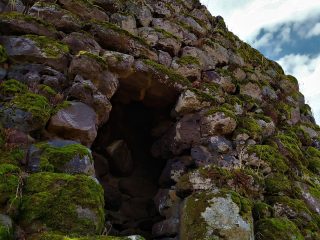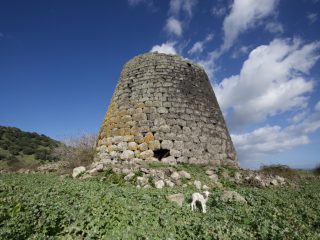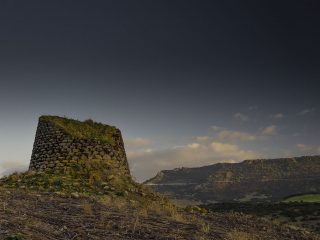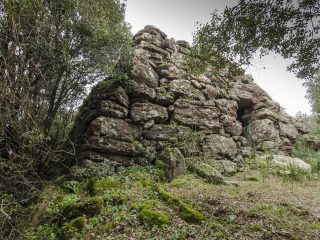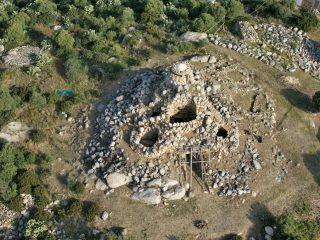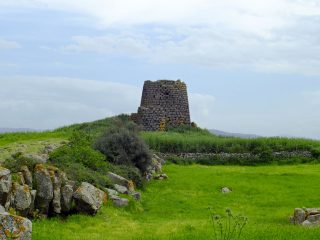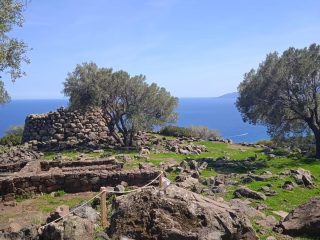The village of Sa Sedda ‘e sos Carros is located in Oliena, in the magnificent setting of the Lanaitto Valley, inhabited up until the Paleolithic period.
The site has numerous huts in a circular and oval plan, and is an interesting village-sanctuary dedicated to the worship of water, with rooms destined to the working of bronze.
Worth mentioning is a circular hut, known as “fonte“, with its unusual architecture, its state of preservation and its ritual function. Its internal walls are produced with perfectly square blocks of white limestone and dark basalt. The reliefs of 7 heads of mouflon and rams are carved into the top of the walls which have a through hole in correspondence with the mouth. The water coming from a gutter dug into the perimeter blocks flowed out of these holes and into a large basin in the middle of the floor. You can easily understand the sacred function of this room, indeed the worship of water seems to have been very common at the end of the nuragic civilisation.
A little further on is a large chiselled structure in basalt which may also originally have hosted religious rituals which involved the use of water. At a later date, it became a place for collecting bronze items destined to be remelted.
Take the road which connects the towns of Oliena and Dorgali to reach the village and turn at the fork for the Su Gologone spring. Once passed the Su Gologne Hotel and in front of the entrance to the spring continue on the right towards the Lanaitto valley. The road is mostly a dirt track, but it is still possible to travel along it as far as the site.








